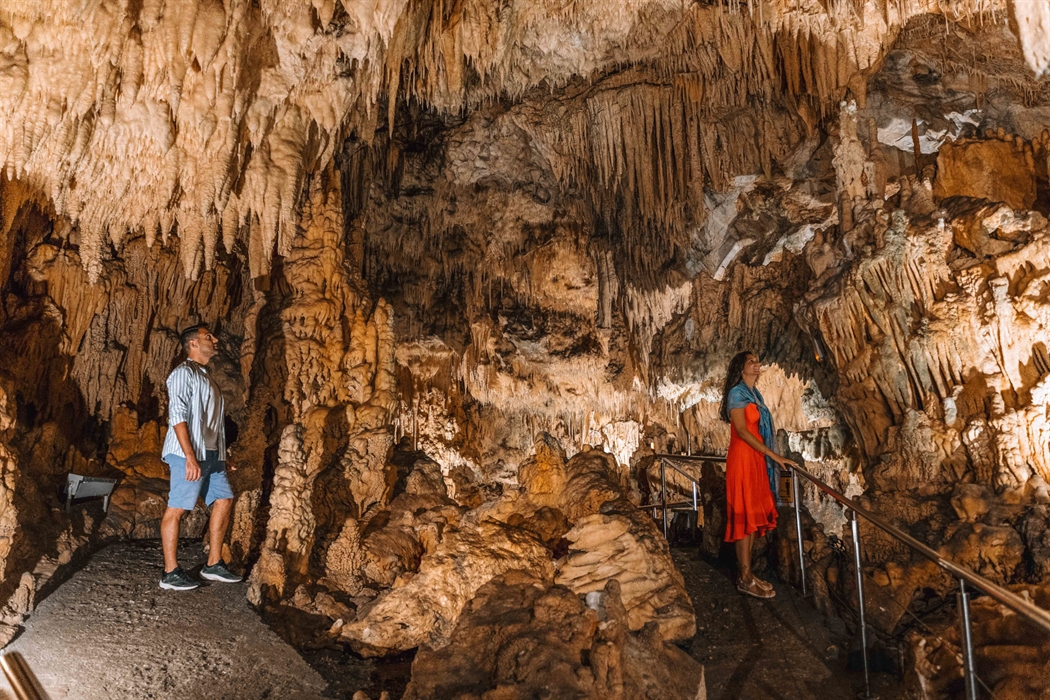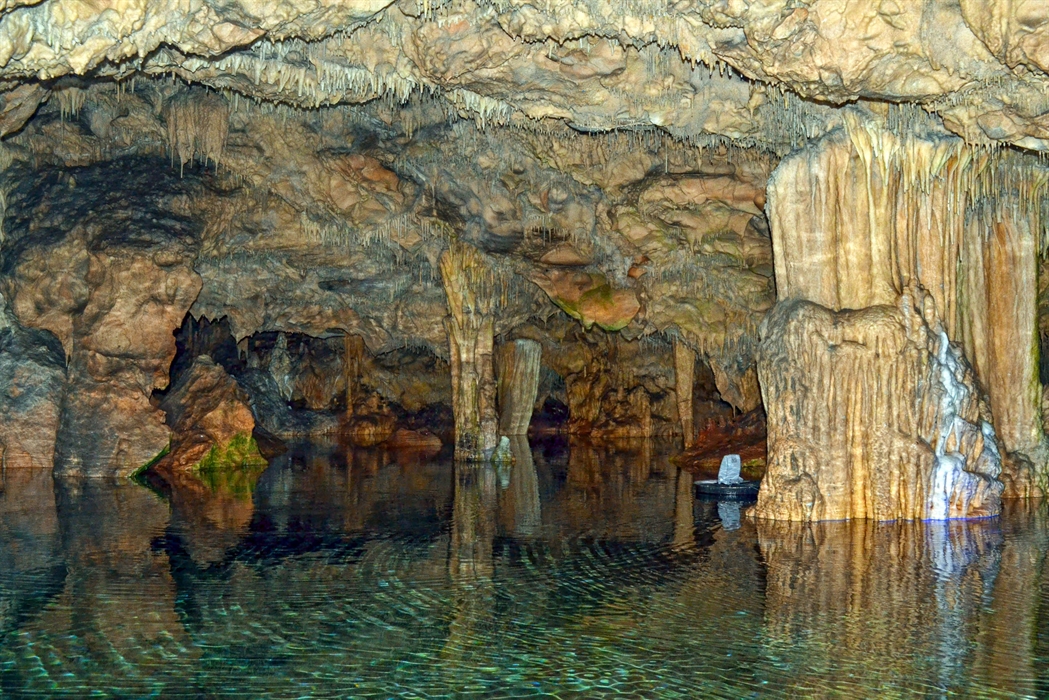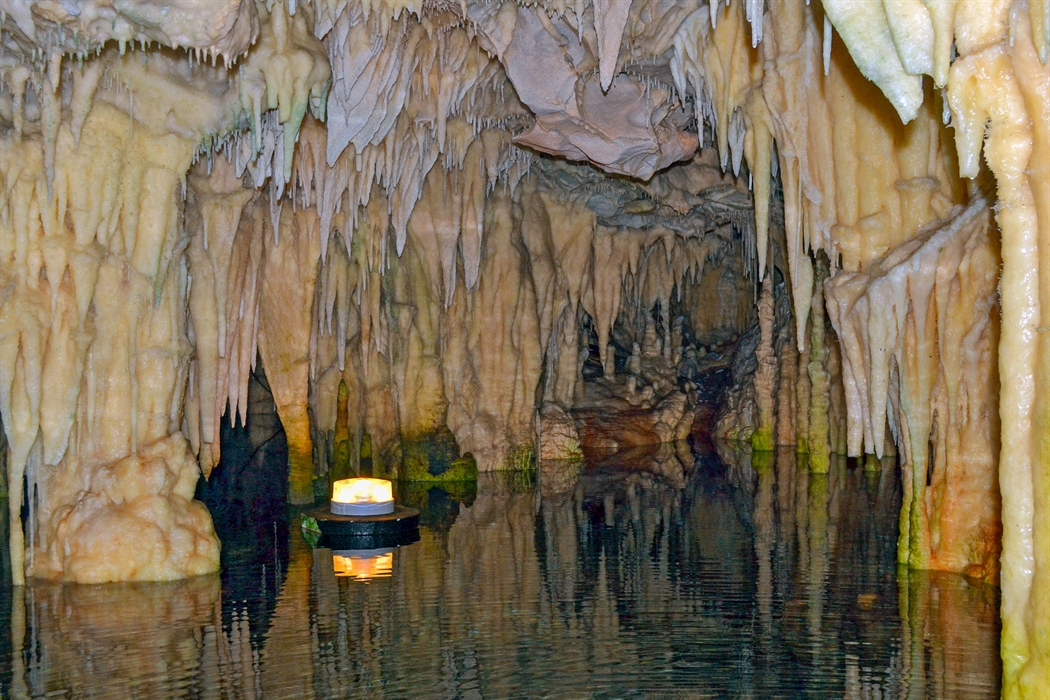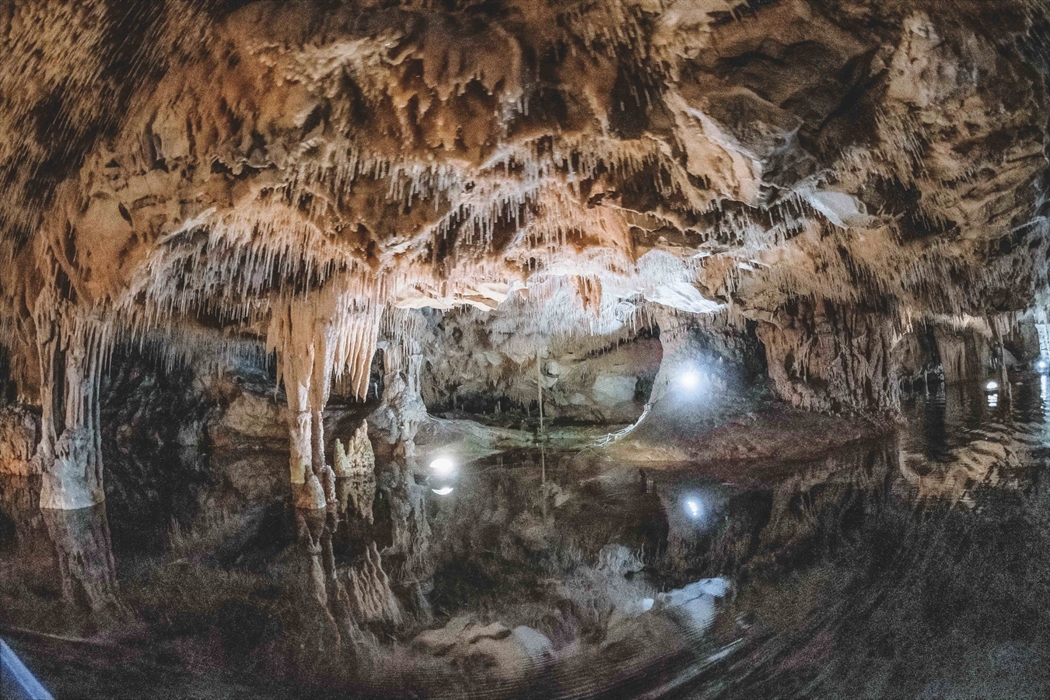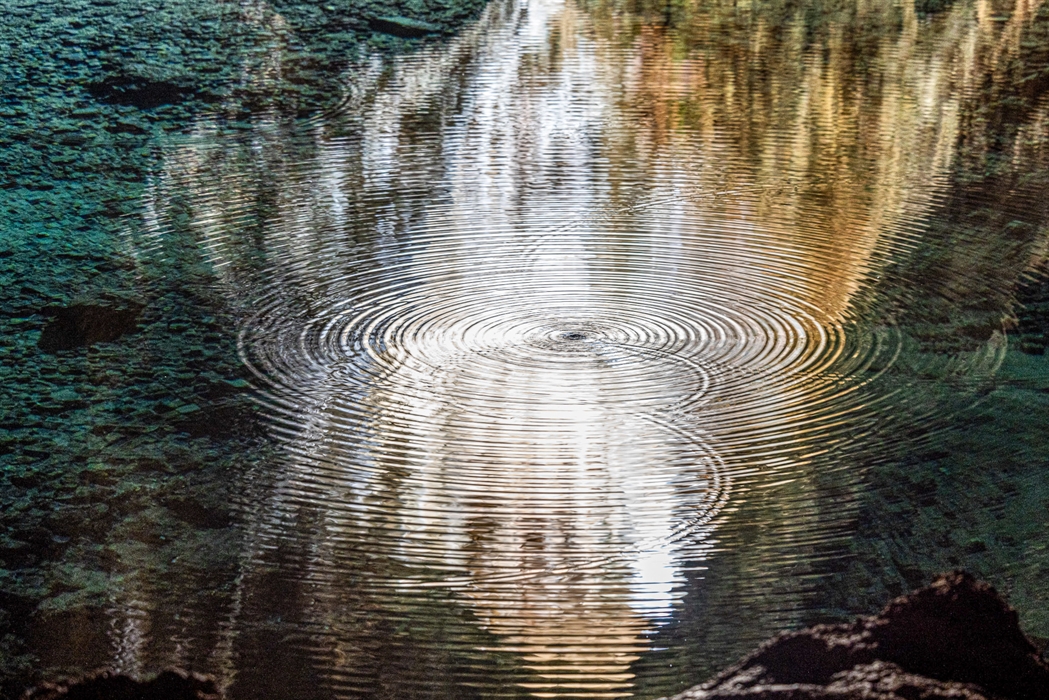Diros Cave
The Diros Cave (Vlychada), on the western coast of Mani is one of the most spectacular caves of its kind in the world. The whole cave system is a unique treasure which is hidden from human eyes in the depth of the earth, but thankfully there is a 1500m. (25 min) tour of both the lake inside the cave and the other chambers which will bring you “face to face” with the weird and wonderful stalactite and stalagmite formations.
Taking a boat trip through the crystal-clear waters of the Diros Cave is like taking a trip into another world. The caves are stunning, with weird and wonderful stalactite and stalagmite formations and dramatic lighting that showcases their sheer natural beauty. Your boat will take you through the labyrinthine caves to see chambers and formations such as the "Mantle of Poseidon", the "Great Curtain", the "Stone Lily", the "Pink Apartments", the "Lake of the Fairies", the "Sea of Shipwrecks" and the "Chocolate Room”.
To day, 14,700 meters of routes through the cave have been mapped. Most of the Vlychada Cave, also known as the Diros Cave, is below the surface of the water which has a maximum depth of 80 m.
This famous cave is in the Diros Cove on the western shores of the Mani and is considered to be one of the most important lake caves in the world. Over millions of years, water has been penetrating the cracks in the limestone rock and slowly dissolving it, creating the stalactites and stalagmites we can see today. Locals discovered the cave in 1923 when they went in through the natural entrance to find drinking water, but it was not until 1949, when Giannis and Anna Petrocheilou from the Hellenic Speleological Society explored the cave systematically for the first time and discovered the grandeur of the cave’s interior.
The natural entrance to the cave is on the coastline, about 50m west of the current artificial entrance which was made in 1961.
Over the years, experts have gathered an impressive amount of information from explorations: Fossilised panther, hyena, lion, deer and pine marten bones were found in the cave, along with the largest deposit of hippopotamus bones in Europe! Prehistoric pottery has been found near to the cave’s natural entrance, showing that there was a human presence in the area going as far back as the Neolithic Age.
Vlychada cave was opened to the public for the first time in 1967.
ALEPOTRYPA CAVE
Just 220 meters from the cave of Diros is the Alepotrypa cave which is famous for its stalactites. However, the cave also has another claim to fame; it was very important to people in the Neolithic Age. Although it is not (yet) open to visitors, it is well worth learning something about its story.
The vast chambers inside the cave were inhabited by people from the middle of the 6th millennium BC to 3200 BC, something which was proven by the archaeological finds uncovered there which included human skeletons, human skulls, and animal skeletons.
In his book "Neolithic Diros, Alepotrypa Cave" the archaeologist Giorgos Papathanasopoulos who excavated the cave from 1970 gives detailed information about its fascinating history.
As he says, around the beginning of the 5th millennium BC a group of sailors were sailing by the shores of the Messinian Gulf on their way to Milos to get obsidian - the precious hard volcanic material which they used to made tools and weapons. The group found shelter from the storms in the bay of Diros and settled in the cave where there was water. Over time, the site developed into an important commercial centre.
Archaeological research identified traces of a hierarchically organised society, with an economy based on agriculture, animal husbandry and maritime trade. The life of the Neolithic community was interrupted by a strong earthquake in 3200 BC which sealed up the entrance to the cave, leaving it undisturbed for 5,000 years, until 1958 when it was discovered by speleologists Giannis and Anna Petrocheilou. Since then, it has been an important site for archaeologists.
Mr.Papathanasopoulos and the two other authors of the book, the archaeologists Varvara Katsipanou-Margeli and Georgia Kourtesi-Filippaki, tell us that Alepotrypa was not only somewhere to live for the Neolithic community, but was also a storage space, an area used for domestic activities, a burial place and a place of worship. About 250 objects - pottery vessels, storage jars, stone and bone tools, weaving implements, weapons, jewellery, and amulets - provided the experts with information about the everyday life of Neolithic people. In Alepotrypa, only one clay vase among hundreds was found with a representation of three human figures.
Did you know that
The Diros Cave is open to visitors all year. Due to high demand for the tours, it is best to book tickets online at (https://ediros.etadwebtickets.gr).
Tel. 27330 52222-3, www.diros-caves.gr.
Location
Find the destination on the interactive map below.
Categories
Weather
Σχετικό περιεχόμενο χρηστών (UGC)
Ενημερωθείτε για ενδιαφέροντα θέματα γύρω από τον προορισμό μέσα από το περιεχόμενο των χρηστών μας
Discover 7 hidden gems of the Peloponnese
Many of you may have already visited some of the most renowned attractions…
TOP 10 archaeological museums in the Peloponnese
Olympia, Mycenae, Epidaurus, Diros Cave, Ancient Corinth, Messene and…
TOP 10 Castles in the Peloponnese
Castles galore! Mystras, Monemvasia, Palamidi, Methoni, Koroni,…
Newsletters
- About us
- FAQ's
- Map
- Tourism information centers
- Disclaimer
- Sitemap
- Our brand
- Media roum
- Adding your bussiness
- Corporate
- MICE

Peloponnese. Greece beyond the obvious





Design and creation from Cosmote
Marinas and Moorings
Diving centers
Get inspired
- Media gallery
- Blog
- The Peloponnese in the media
- Your feedback
- Users' general content
- Users' local products
- Users' events content
- Ask a local
More
- Accommodation
- Travel agencies
- Restaurants
- Services
- Destinations Map
- Weather
- Public transport
- Events
- Frequently asked questions
- Useful phones
- B2B
- Destination Data
- Contact

